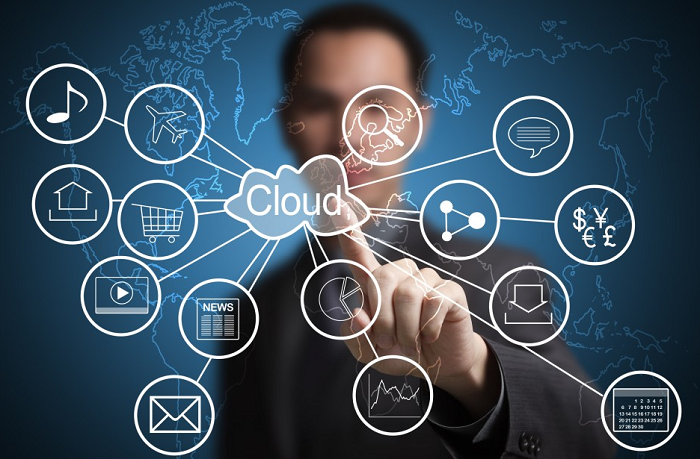The digital world keeps seeing innovations. Two big ones are Blockchain and Data Analysis. For many years, they worked separately. Blockchain-secured transactions and Data Analysis found useful info. But now, they’re coming together excitingly, making a powerful team. This guide will explore how blockchain and data analysis are combined as you learn in the data analyst course.
Understanding Blockchain and Data Analysis
Before we dive into how blockchain and data analysis are coming together, let’s clearly define what each one is all about.
What is Blockchain?
Blockchain is a digital record-keeping system. It stores transaction data in a secure, see-through, and decentralized way. It’s like a chain made of blocks that hold information. Each block connects to the one before it, making an unbroken chain.
Here are some key facts about blockchain:
- Decentralized: The record is shared across many computers instead of one central owner. This makes it hard to attack since there’s no single weak spot.
- See-through: All users can see the transactions, but remain anonymous.
- Secure: Cryptography like hashing and digital signatures are used to secure transactions. Once data is recorded, it can’t be secretly edited.
- Agreement-based: Members must validate new transactions through agreement systems like proof-of-work. This ensures trust.
- Automated: Smart contracts run tasks automatically when certain conditions are met, reducing reliance on middlemen.
Some popular uses of blockchain are cryptocurrencies like Bitcoin, smart contracts, supply chain tracking, voting, and more. The see-through and unchangeable nature of blockchain builds trust.
What is Data Analysis?
Data analysis means using techniques to examine, clean, transform, and study data. The goal is to find useful information, get insights, and support decision-making. It uses statistics and programming tools to organize, search through, visualize, and make sense of huge amounts of data.
Some common types of data analysis include:
- Descriptive analysis: Summarizing and categorizing data to find patterns, trends, and links. For example, analyzing sales data by region.
- Diagnostic analysis: Investigating the root causes of a problem. For example, analyzing customer feedback to understand lower satisfaction.
- Predictive analysis: Making forecasts about future outcomes using data modeling. For example, forecasting next quarter’s sales based on past data.
- Prescriptive analysis: Recommending best actions to achieve goals based on data. For example, optimizing pricing to maximize profit using demand forecasts.
Data analyst courses help individuals in businesses in activities like segmenting customers and detecting fraud. It turns raw data into valuable business intelligence for strategic decision-making.
Why the Blockchain-Data Analysis Partnership Matters
Now that we’ve explored blockchain and data analysis separately, let’s look at why combining these two technologies can be so powerful.
Improving Trust in Data
One big challenge in data analysis is ensuring the quality and integrity of the data being analyzed. Bad-quality data leads to unreliable or misleading results.
Blockchain provides a solution using its ability to trace data origins and prevent tampering. Recording the data collection process on blockchain builds confidence that the data being analyzed is real and accurate.
Strengthening Data Security
Data breaches lead to losing sensitive information, causing huge financial and reputation damage. Centralized data storage gives one target for cyber attacks.
Blockchain’s decentralized structure makes it much harder for hackers to compromise data. The data spreads across the network, with no central servers to attack. Cryptography better protects data used in analysis applications.
Empowering People with Data Control
Today, governments and corporations control most data while individuals have little say in how their data gets used.
Blockchain shifts control back to individuals by letting them own their data and choose how to monetize or analyze it. Smart contracts can encode data usage terms, automatically executing based on user permissions. Individuals get compensated for data contributions.
Enabling Traceability and Transparency
When analytical models make predictions, it’s crucial to trace how the outputs were calculated. The inner workings of algorithms are usually black boxes, lacking transparency.
With blockchain, the data processing steps and analytical models can be permanently recorded. This audit trail enables tracing the origins of analytical insights and building trust in AI and machine learning.
Facilitating Data Sharing and Teamwork
Organizations often silo their data, reluctant to share beyond their four walls. This results in fragmented datasets and lost opportunities for gaining deeper collective insights through big data analytics.
Blockchain enables different parties to securely share data without losing ownership. Participants maintain control while selectively sharing data for combined analysis, unlocking collaborative analytics power.
Real-World Uses of the Blockchain-Data Analysis Partnership
The complementary strengths of blockchain and data analysis in the data analyst course are a powerful combo. This opens new possibilities for data analysts across different sectors.
Supply Chain Management
Blockchain enables end-to-end traceability across global supply chains while data analysis provides real-time visibility and insights for optimization. This improves logistics, prevents theft and counterfeits, and enables ethical sourcing choices.
Healthcare
Patient records stored on blockchain ensure security and accuracy. Analytics helps derive population health insights while maintaining individual privacy protections. Data analysis also enables personalized medicine and AI diagnosis.
Banking and Finance
Blockchain provides undeniable transaction records and smart contract automation while data analysis strengthens fraud detection, risk management, and investment insights. The result is a transparent and efficient financial system.
Retail and E-Commerce
Customer data protected by blockchain allows retailers to securely share data to uncover collective insights on behavior, segmentation, inventory optimization, and more while safeguarding personal information.
Government
Recording government data like asset registries, benefits distribution, and votes on tamper-proof blockchain adds accountability while analytics strengthens public policy decision-making with data-driven insights.
The applications are huge, bringing transparency and efficiency to many global systems.
Turning Potential Into Reality: Challenges and the Road Ahead
The blockchain-data analysis partnership shows great promise but there are still challenges to address before realizing its full potential.
- Scalability: Limits of current blockchain platforms prevent large-scale analytical applications. Next-gen solutions are needed to handle high transactional data volumes.
- Data quality: Not all data can be fully trusted just because it’s on the blockchain. Real-world errors can still introduce bad data.
- Privacy concerns: Though blockchain offers anonymity, true anonymity remains difficult. Collecting personal data on-chain for analysis raises privacy issues. Solutions like zero-knowledge proofs and encryption help.
- Energy use: Blockchains like Bitcoin consume massive energy due to complex consensus mechanisms like proof-of-work. This needs fixing for sustainable large-scale deployment.
- Regulatory uncertainty: Lack of clear regulations around blockchain and data usage inhibits enterprise adoption. Standards will promote transparency and accountability.
- System connectivity: There are hundreds of fragmented blockchain platforms today. Cross-chain interoperability is required to connect data silos for comprehensive analysis.
Despite these challenges, the strengths of blockchain data analysis make it worth investing in. Collaboration between policymakers, technologists, and industry leaders can navigate these hurdles. The potential benefits for society are too big to ignore.
Conclusion
The future looks bright for a data analyst expert or someone pursuing a data analysis course in Pune when blockchain and data analysis team up. Blockchain brings trust. Data analysis brings insight. Combined, they unlock transparency and efficiency across many sectors. From businesses to governments, the applications are huge.
But challenges remain. Growing pains are expected for such game-changing innovations. Fixing issues like energy use and privacy will take hard work and collaboration. Standards and regulations need time to catch up.
Despite hurdles, the strengths and potential are undeniable. Blockchain keeps data safe. The analysis makes data talk. Supply chains to healthcare, finance to farming – this dynamic duo can transform systems worldwide.
The promise is great. But realizing it takes all of us. Governments, companies, technologists, individuals – we must work as one. Our actions today can lead to an amazing tomorrow.
ExcelR – Data Science, Data Analyst Course Training
Address: 1st Floor, East Court Phoenix Market City, F-02, Clover Park, Viman Nagar, Pune, Maharashtra 411014
Phone Number: 096997 53213
Email Id: enquiry@excelr.com























